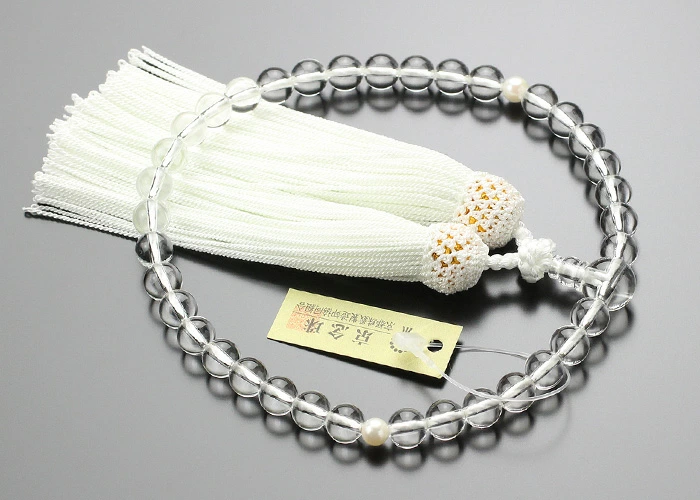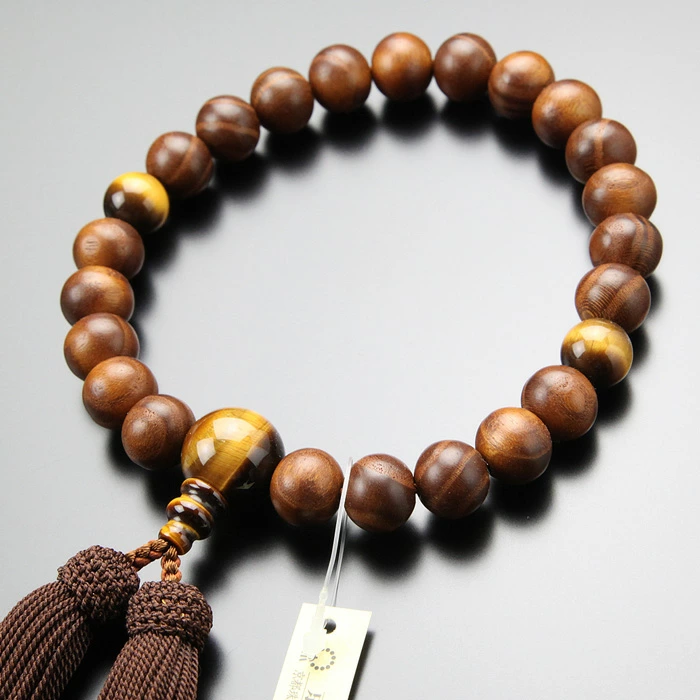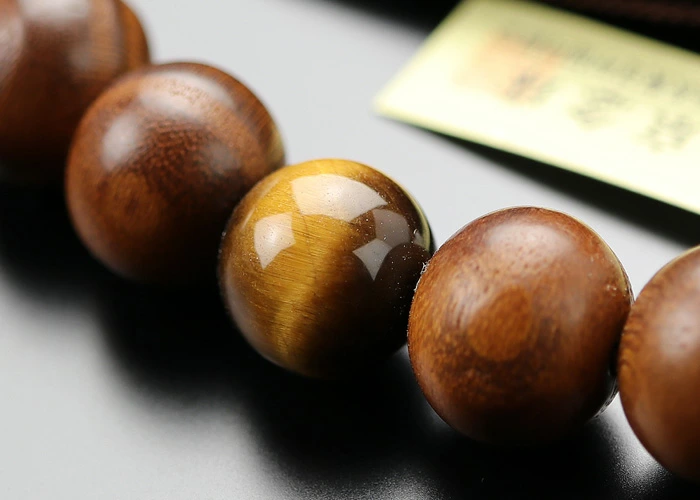Juzu beads in Japan
Buddhism was introduced to Japan from overseas (competing theories set the year at 538 or 552), with Buddhist prayer beads entering the culture at around the same time.
90% of these beads are produced in Kyoto, which is considered hallowed ground for Buddhism.
Japanese rosaries are made one at a time by hand by artisans, and are noted for their longevity due to their careful assembly.
Buddhists from around the world thus travel to Kyoto to obtain their own beads.
They can even be bought on e-commerce sites.
Since these beads are used not only in Buddhism, but in Islam, some shops customize them for Muslims.
In Japan, many people now use these bracelets on a regular basis in their everyday lives, not as a Buddhist rosary, but as a protective charm they can integrate in their outfits.
Types of juzu beads
Rosaries are offered in ones for men, women, and children.
The difference lies in the size of the beads.
Rosaries intended for use in one hand are approximately 6-8mm when sized for women.
Rosaries intended for use in one hand are approximately 10-12mm when sized for men.
While there is no rule on how old one must be to use them, children up to about 4-5 years of age generally use more compact ones sized for their hands.
Choosing a one-handed rosary or a denomination-specific rosary
Also called "simplified" rosaries, these are tailored for when you need a general rosary for any denomination for sudden funerals or memorial services.
This simplified form of rosary is recommended for those buying beads for the first time, or those who are not looking for beads for a specific denomination.
This is a more formal type of rosary tailored to a specific denomination.
The specifications vary depending on each denomination, so if you plan to buy one, you should consult with your own denomination first before making your selection.
Generally speaking, married women should choose beads that match their spouse's denomination.
Choosing by bead material and color
Generally speaking, there is no rule saying that a certain material must be used, so you can choose whatever you prefer, regardless of the age or gender of the person using the beads. Prayer beads are intended to be used for a long period of time, so we recommend picking one that you personally like the look and feel of.
| 1. Wooden | There are three main types of materials used for wooden rosaries: tree seeds, wood, and aromatic wood. Seeds include those of the pipal or linden tree, while woods include ebony, cherry, Yakushima cedar, or chinaberry. Aromatic woods include Indian sandalwood. In addition, they develop a unique patina and color as you use them. |
|---|---|
| 2. Stone | Stone prayer beads are generally made of materials like quartz, tiger's eye, agate, jade, onyx, cat's eye, opal, chalcedony, etc. In addition to the color, many people select beads based on the underlying meaning of the stones. |
| 3.Types of stone | Clear (quartz),Black (black onyx) ,Red (agate),Green (moss agate),Brown (brown quartz) |


